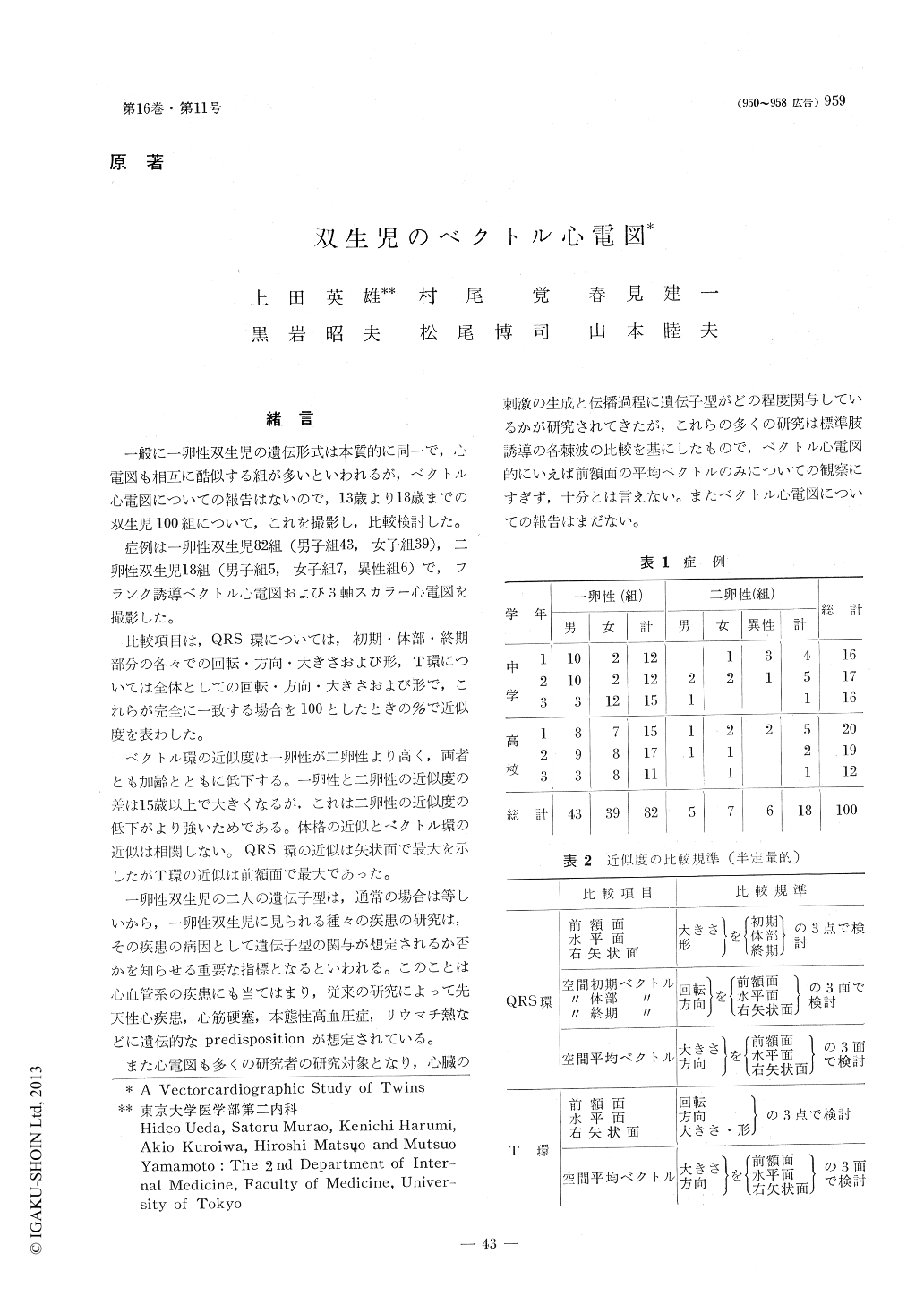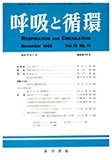Japanese
English
- 有料閲覧
- Abstract 文献概要
- 1ページ目 Look Inside
緒言
一般に一卵性双生児の遺伝形式は本質的に同一で,心電図も相互に酷似する組が多いといわれるが,ベクトル心電図についての報告はないので,13歳より18歳までの双生児100組について,これを撮影し,比較検討した。
症例は一卵性双生児82組(男子組43,女子組39),二卵性双生児18組(男子組5,女子組7,異性組6)で,フランク誘導ベクトル心電図および3軸スカラー心電図を撮影した。
比較項目は,QRS環については,初期・体部・終期部分の各々での回転・方向・大きさおよび形,T環については全体としての回転・方向・大ぎさおよび形で,これらが完全に一致する場合を100としたときの%で近似度を表わした。
ベクトル環の近似度は一卵性が二卵性より高く,両者とも加齢とともに低下する。一卵性と二卵性の近似度の差は15歳以上で大きくなるが.これは二卵性の近似度の低下がより強いためである。体格の近似とべクトル環の近似は相関しない。QRS環の近似は矢状面で最大を示したがT環の近似は前額面で最大であった。
一卵性双生児の二人の遺伝子型は,通常の場合は等しいから,一卵性双生児に見られる種々の疾患の研究は,その疾患の病因として遺伝子型の関与が想定されるか否かを知らせる重要な指標となるといわれる。このことは心血管系の疾患にも当てはまり,従来の研究によって先天性心疾患心筋硬塞,本態性高血圧症,リウマチ熱などに遺伝的なpredispositionが想定されている。
また心電図も多くの研究者の研究対象となり,心臓の刺激の生成と伝播過程に遺伝子型がどの程度関与しているかが研究されてきたが,これらの多くの研究は標準肢誘導の各棘波の比較を基にしたもので,ベクトル心電図的にいえば前額面の平均ベクトルのみについての観察にすぎず,十分とは言えない。またベクトル心電図についての報告はまだない。
One hundred pairs of vectorcardiograms of twins, aged 13 to 18, were analyzed in con-sideration of the idea that heredity patterns of monozygotic twins were essentially similar and several electrocardiographic items would be similar in this group.
Vectorcardiograms and three orthogonal scalar electrocardiograms of 43 pairs of mo-nozygotic male twins, 39 pairs of monozygo-tic female, 5 pairs of male and 7 pairs of female of like-sex dizygotic and 6 pairs of not like-sex dizygotic were taken by Frank's lead system at the annual physical examinations.
The items of vectorcardiograms analyzed semi-quantitatively in each pair of twins were the direction of inscription, magnitude, figure and direction of mean vector in QRS and T loops. QRS loop Was analyzed further in the initial, body and terminal portions separately.
The degree of similarity of vectorcardio-grams was higher in the group of monozy-gotic twins (77.4% for male and 78.2% for female) than in the dizygotic twins (64.7%). The fact was more apparent after 15 years of age and was thought to be due to the greater decrease of similarity of vectorcardio-grams of the non-identical twins. The de-gree of similarity of the QRS and T loops decreased as the age increased. There was no marked correlation between the similari-ties of vectorcadiograms and body build. The highest similarity of QRS loop was recogniz-ed in the sagittal plane in both mono-and di-zygotic groups and that of T loops was in the frontal plane.

Copyright © 1968, Igaku-Shoin Ltd. All rights reserved.


